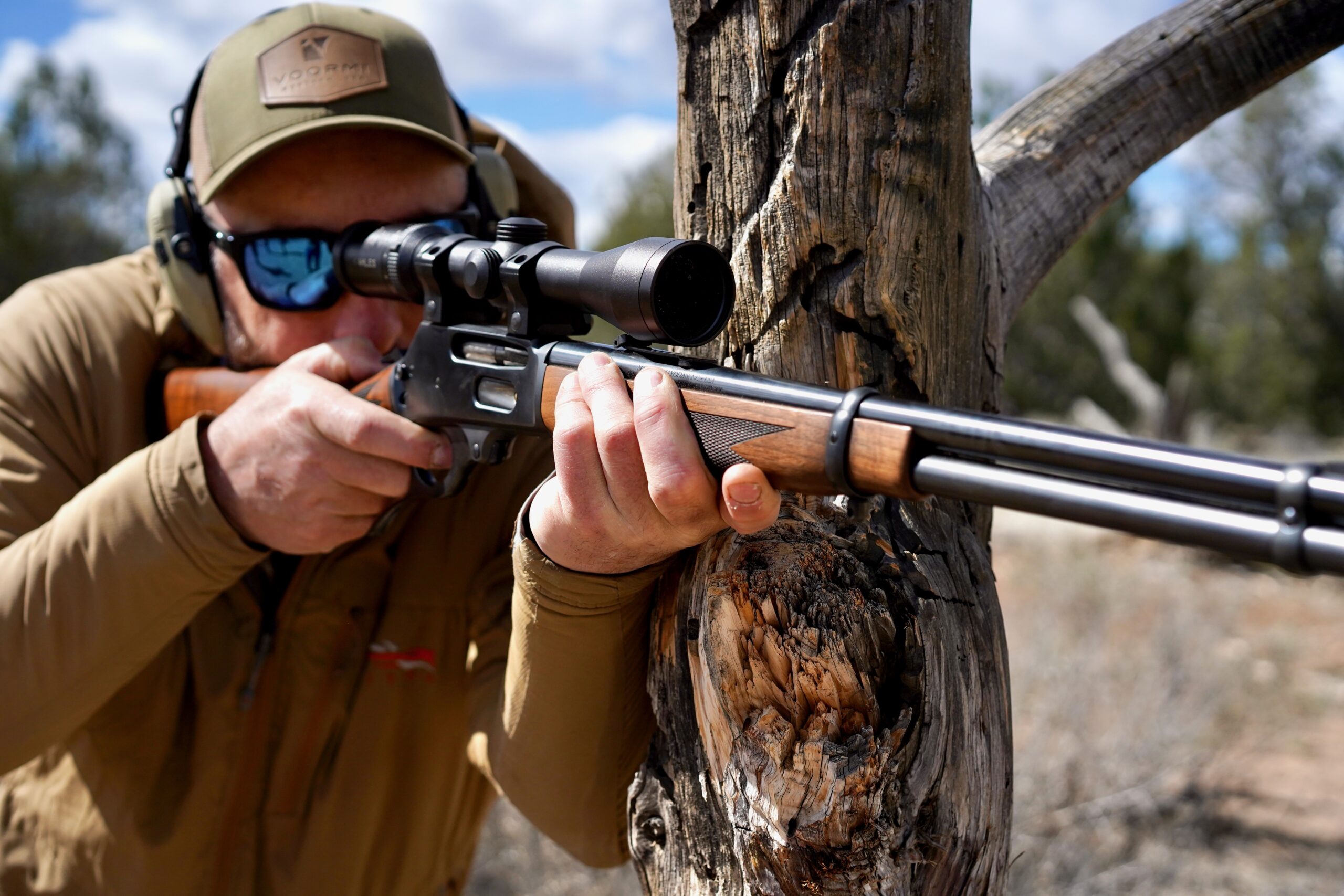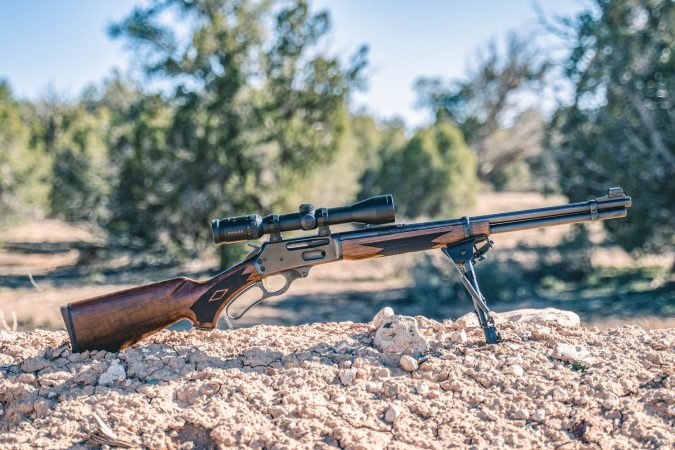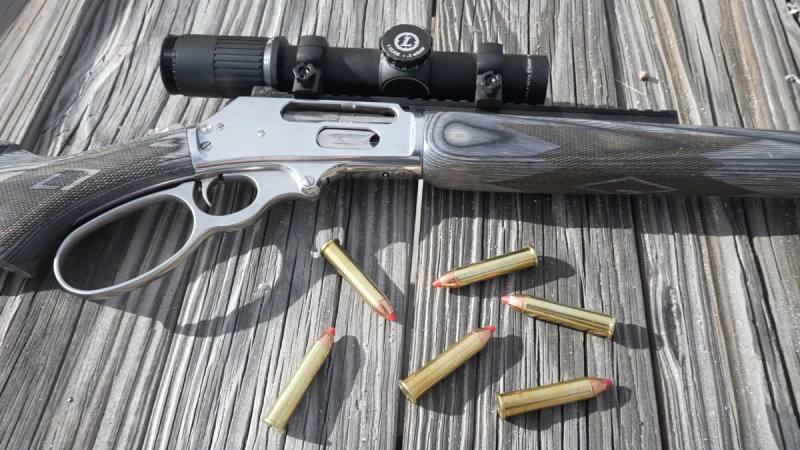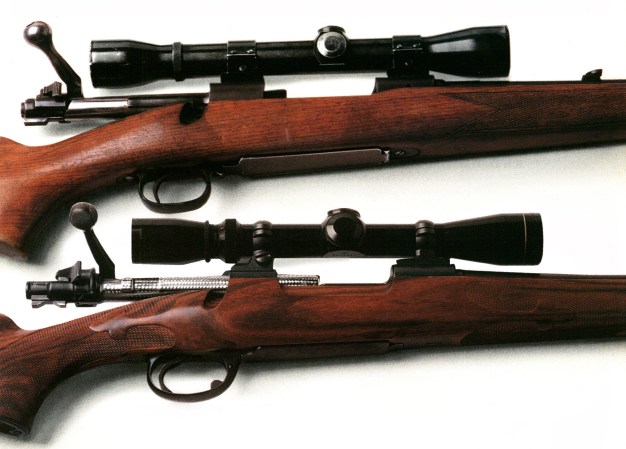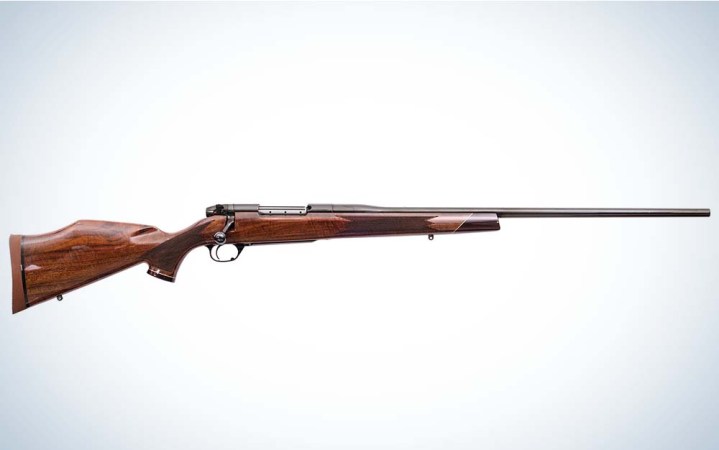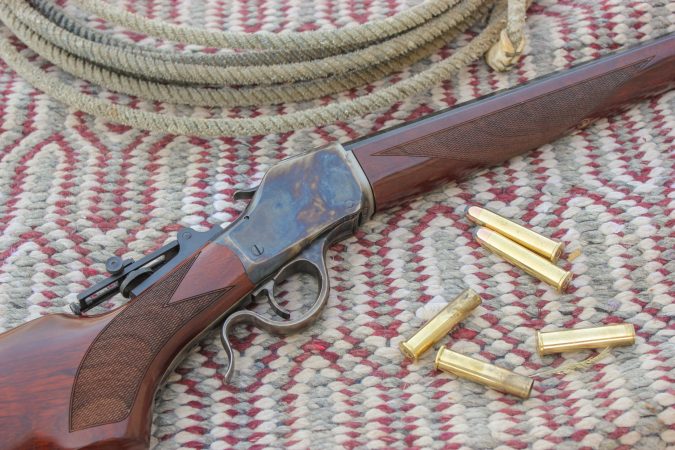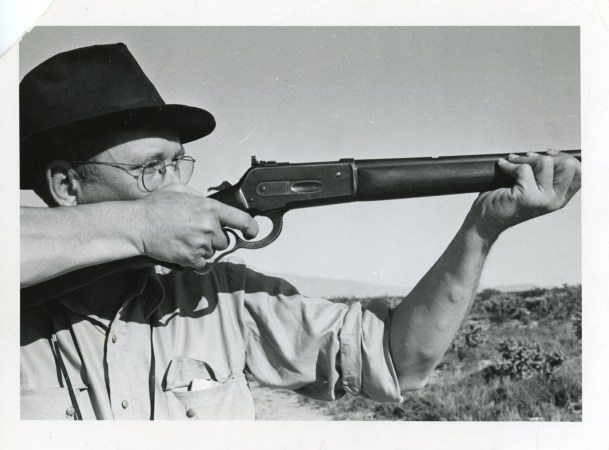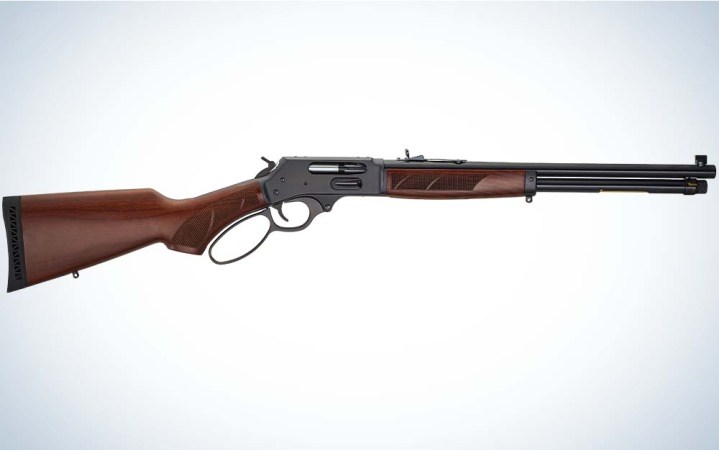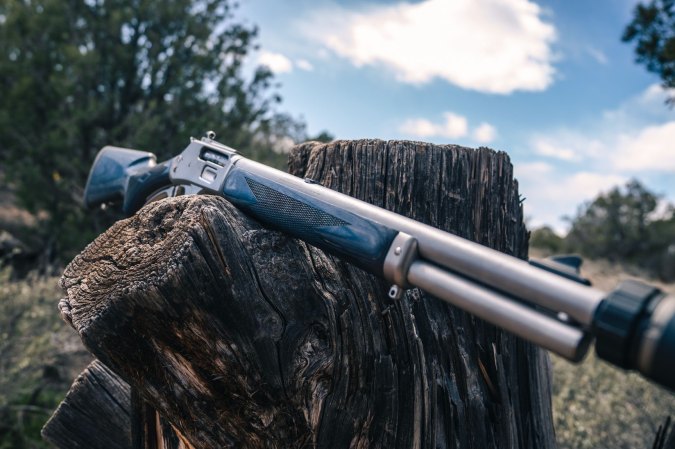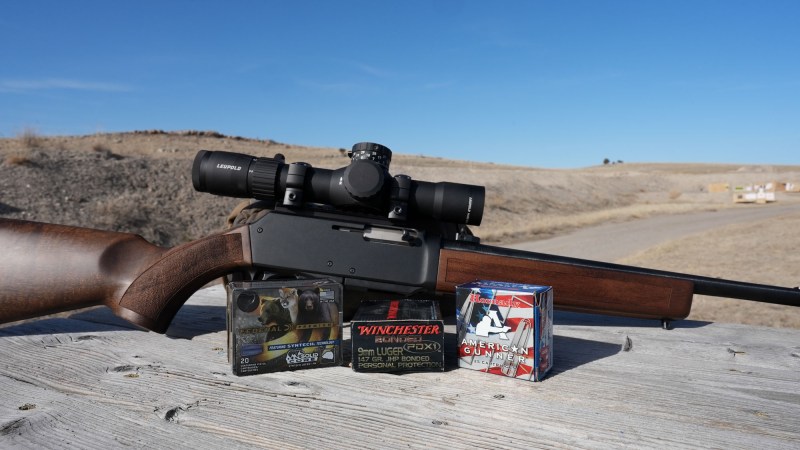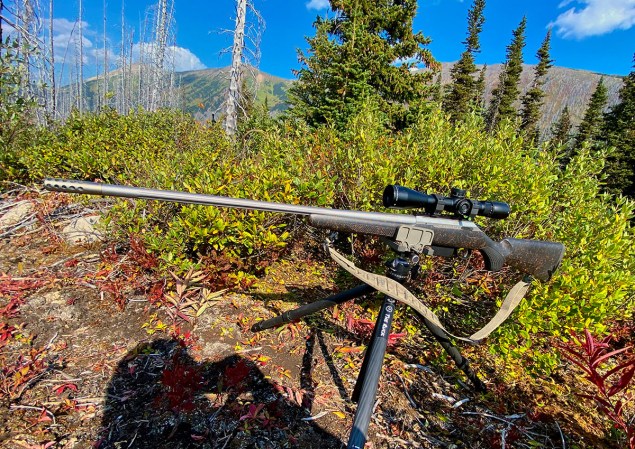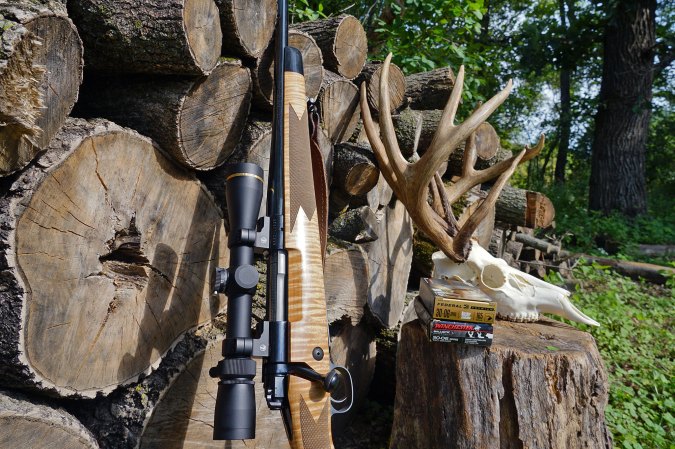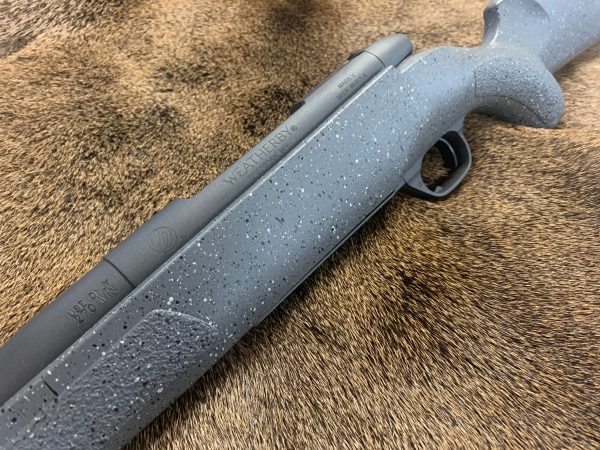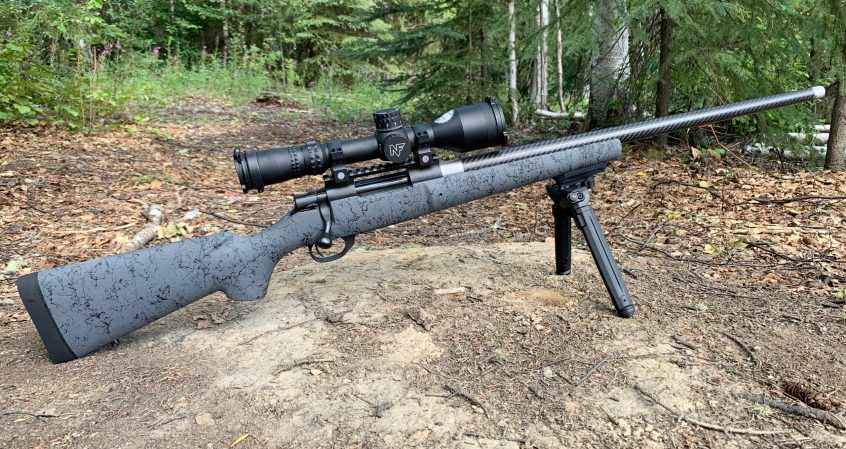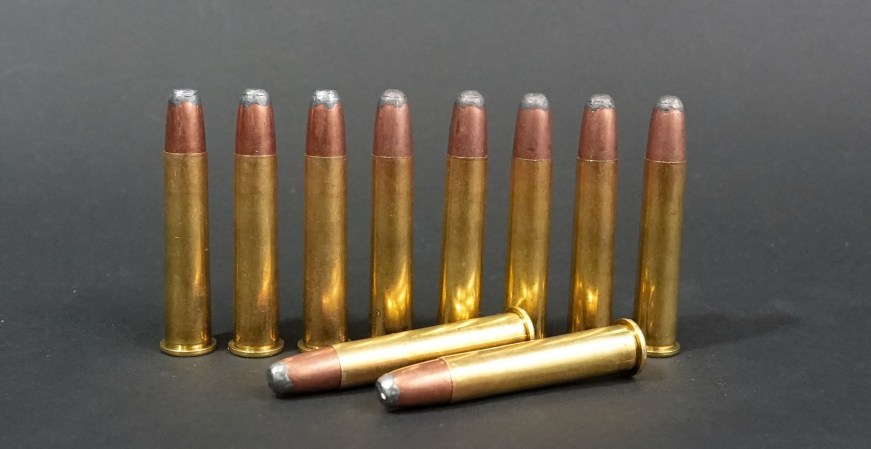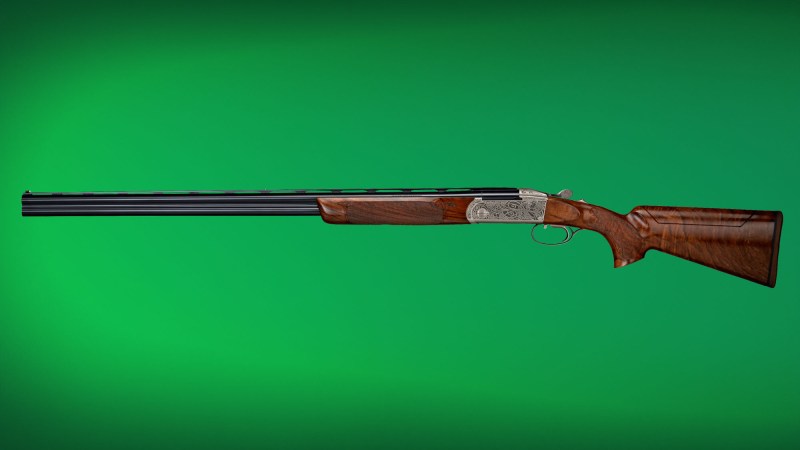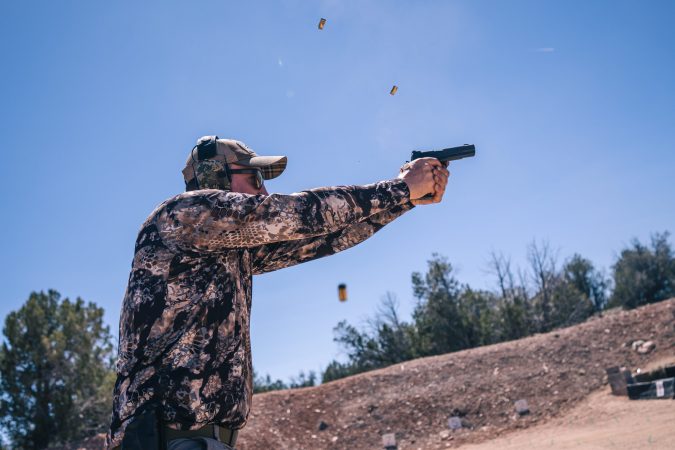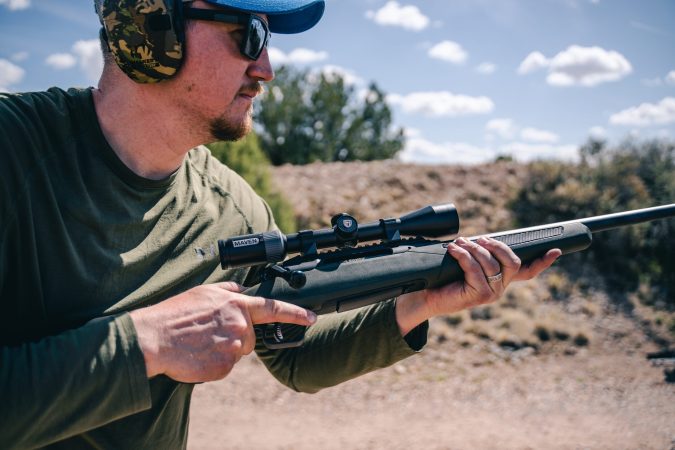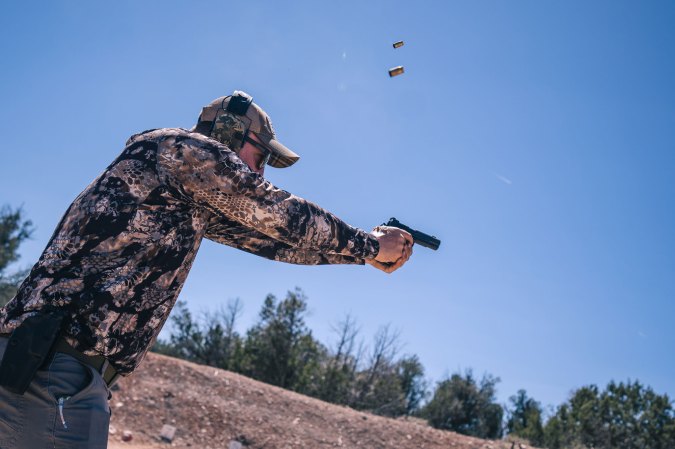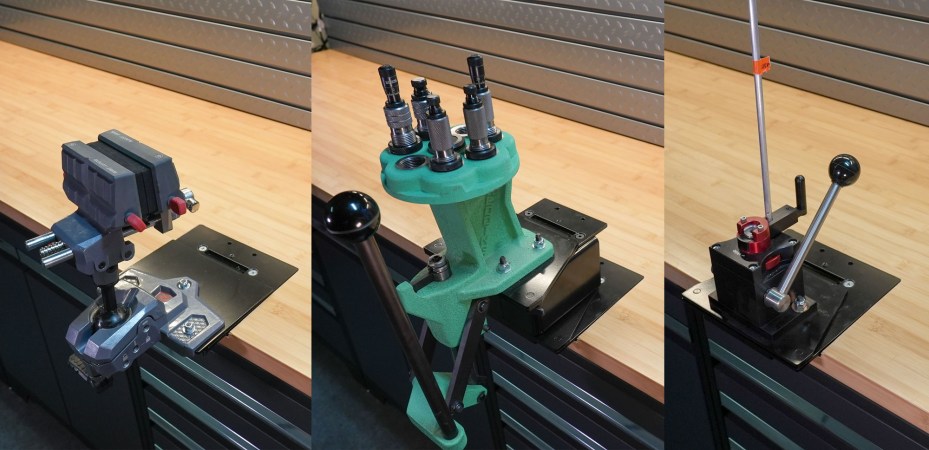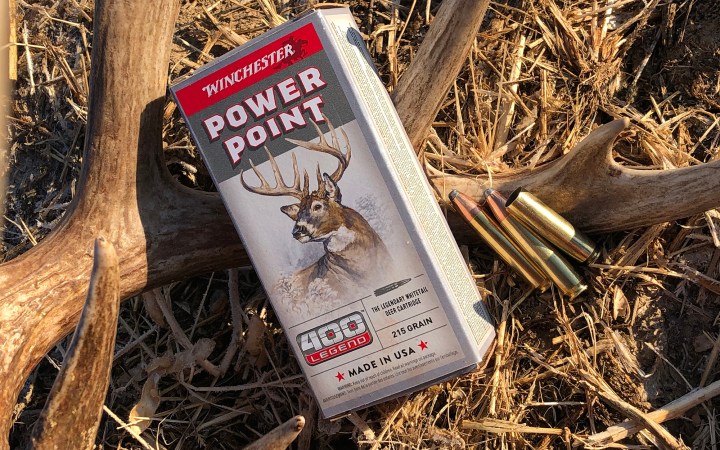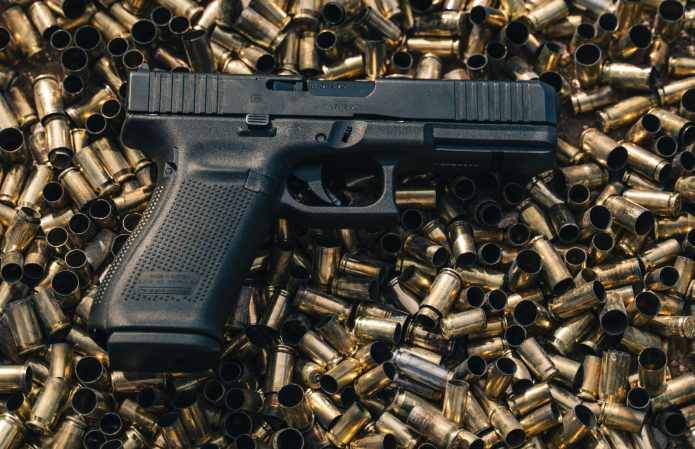We may earn revenue from the products available on this page and participate in affiliate programs. Learn More ›
The reintroduced Marlin 336 Classic, chambered in the eternal .30/30 WCF, continues Ruger’s winning streak with the iconic brand. We had the 336 in the mix during our new rifle test early this year where it went toe-to-toe with a stacked field of more modern offerings yet emerged with our Editor’s Choice award as the best rifle of 2023.
For the skeptics out there, this wasn’t done out of some sense of misty-eyed nostalgia. Yes, I and my fellow test team members have a fondness for traditional rifles, but we also fully embrace the new technologies that have transformed our rifles and our marksmanship. So, despite those trends, the Marlin prevailed.
In short, the Marlin 336, like the 1895 SBL, is an example of modern manufacturing processes pulling on the oars to make the best lever actions to ever wear the Marlin bullseye and horse-and-rider logo. And I say that as someone who grew up with these rifles, which until the early 2000s were built just down the road from my home in Connecticut.
Almost a year after that test took place, I’m still impressed with how well the Marlin shoots. It’s become one of my go-to range companions.
Marlin 336 Classic Specs
- Action: Lever
- Stock: Walnut
- Caliber: .30/30 Winchester
- Capacity: 6+1
- Weight: 7 pounds, 1 ounce (measured)
- Trigger: 8 pounds (measured)
- Barrel: 20 inches with 1:12 twist
- Length: 38.5 inches
- Price: $1,239

Marlin 336 Classic Review Highlights
- Excellent handling
- Wonderful fit and finish
- Flawless cycling
- Accuracy: 1.67 inches with 5-shot groups at 100 yards
Marlin 336 Classic Fit and Finish
Even before you put a single round through the 336 you’d have to be a dim bulb not to take note of how good this rifle looks.
The first thing to jump out is the quality of the wood and metal work, which are both lovely. The stock is made of a dark, richly hued walnut while the metal is polished and blued to a deep luster.
Stock
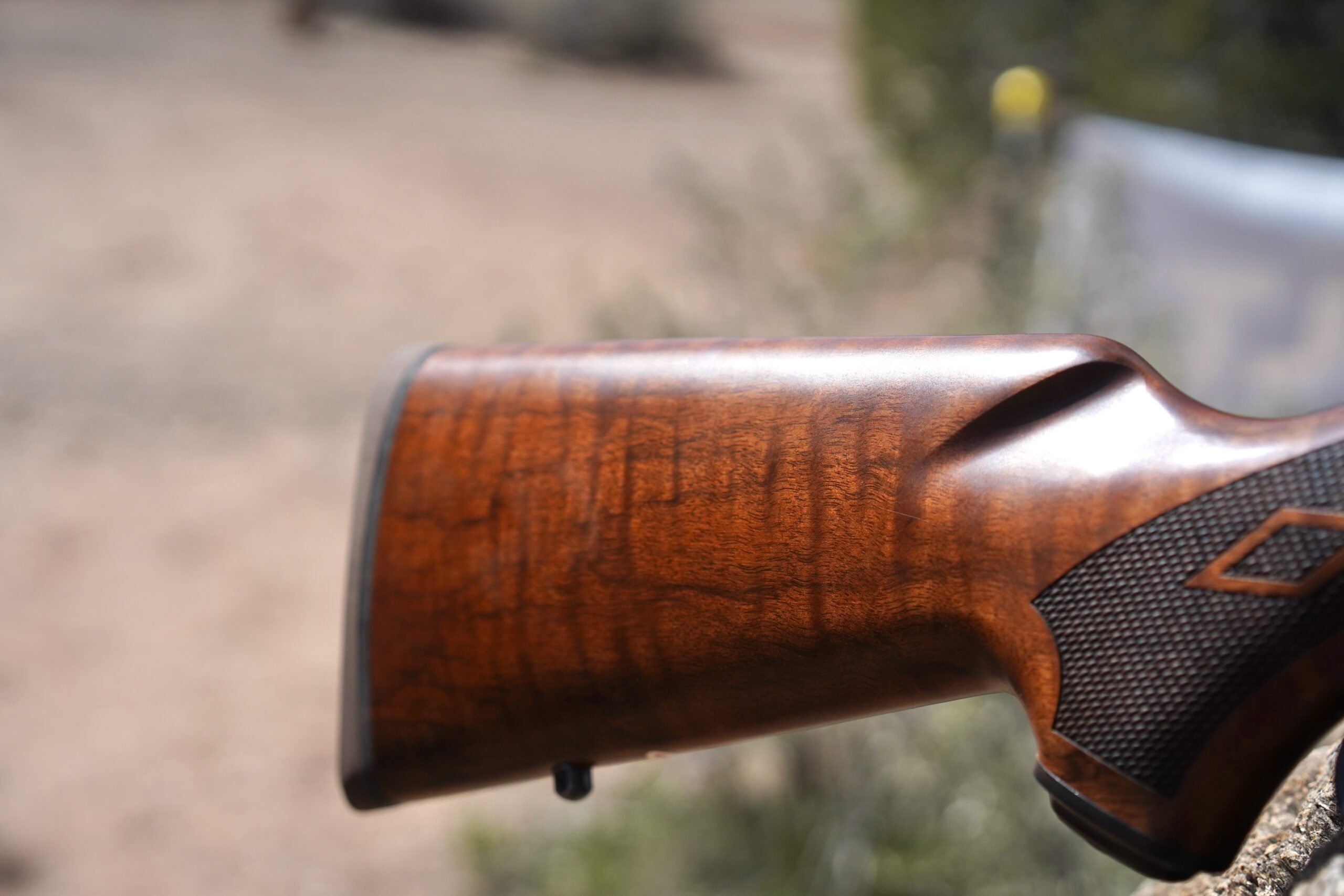
Marlin isn’t offering the 336 with upgraded wood—at least not yet—but what they are using is quite attractive and a step above the standard, uninspired wood that most rifles at this price point wear.
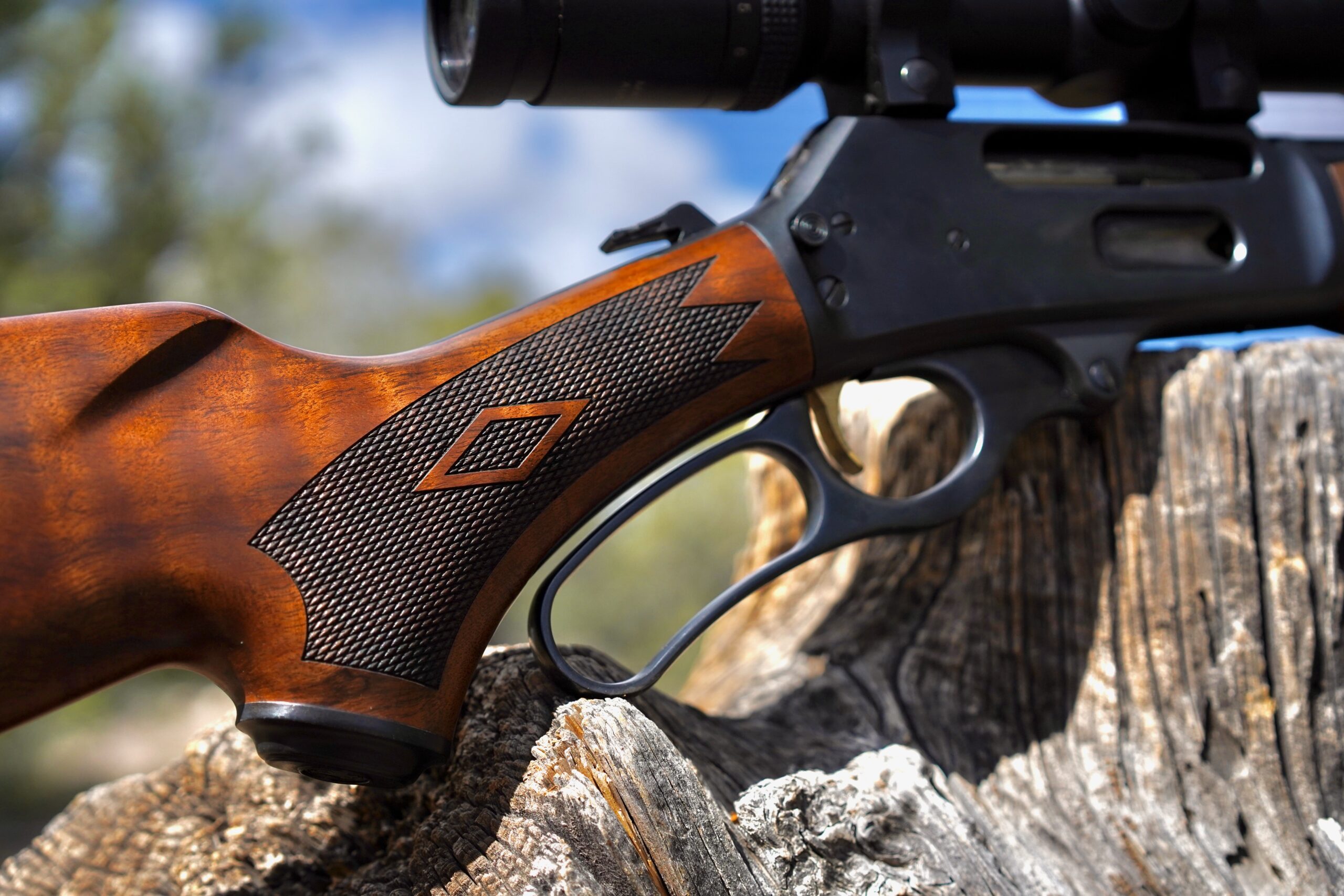
The checkering pattern on the grip and along the fore-end is traditional and well executed. The diamonds point up nicely and are contained within attractive panels that place the texture right where it benefits the shooter most.
Since it is made of wood, the 336 should be handled with extra care, as we found out when the rifle took a spill on the range, dinging the fore-end and eliciting a collective wince among the test team.
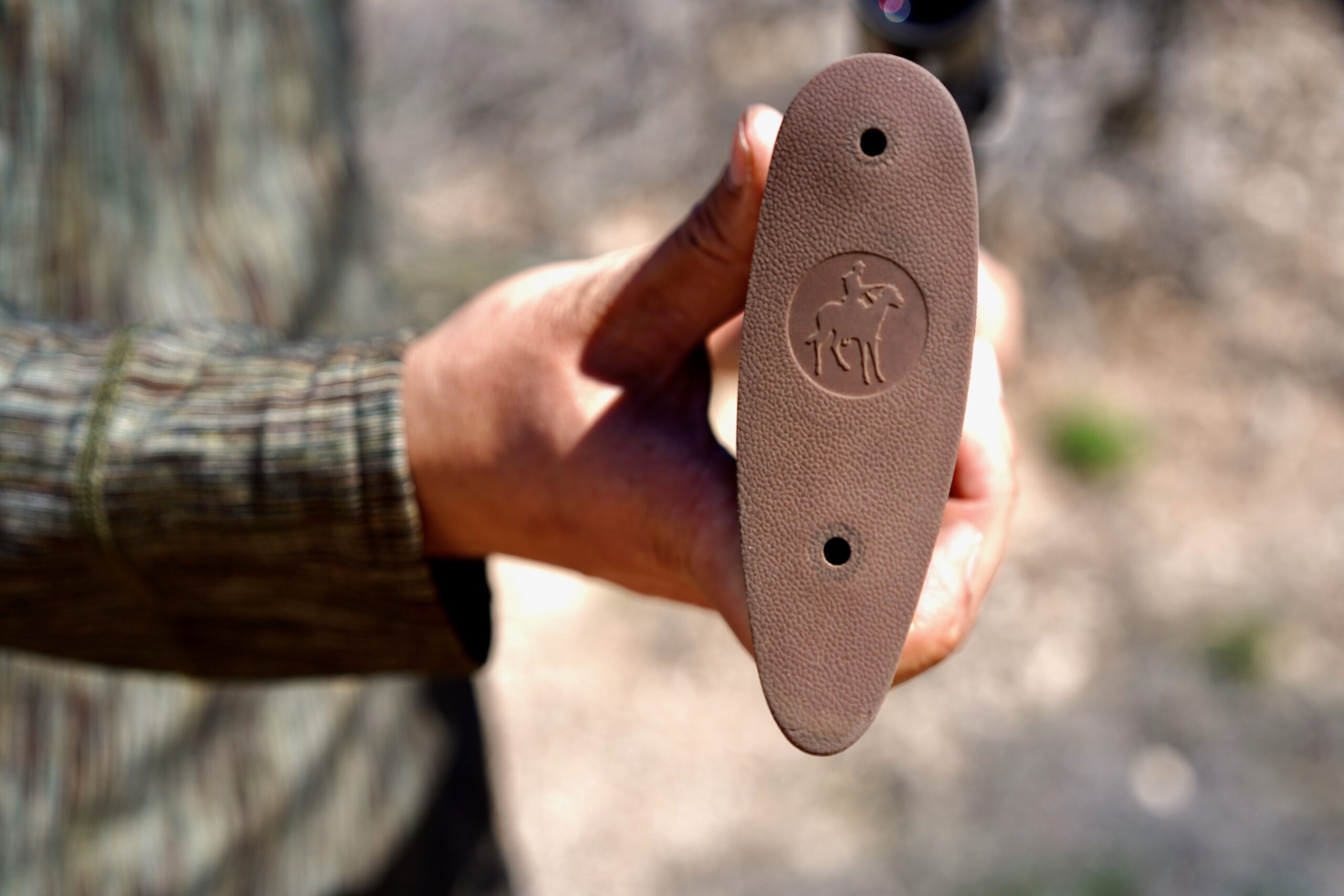
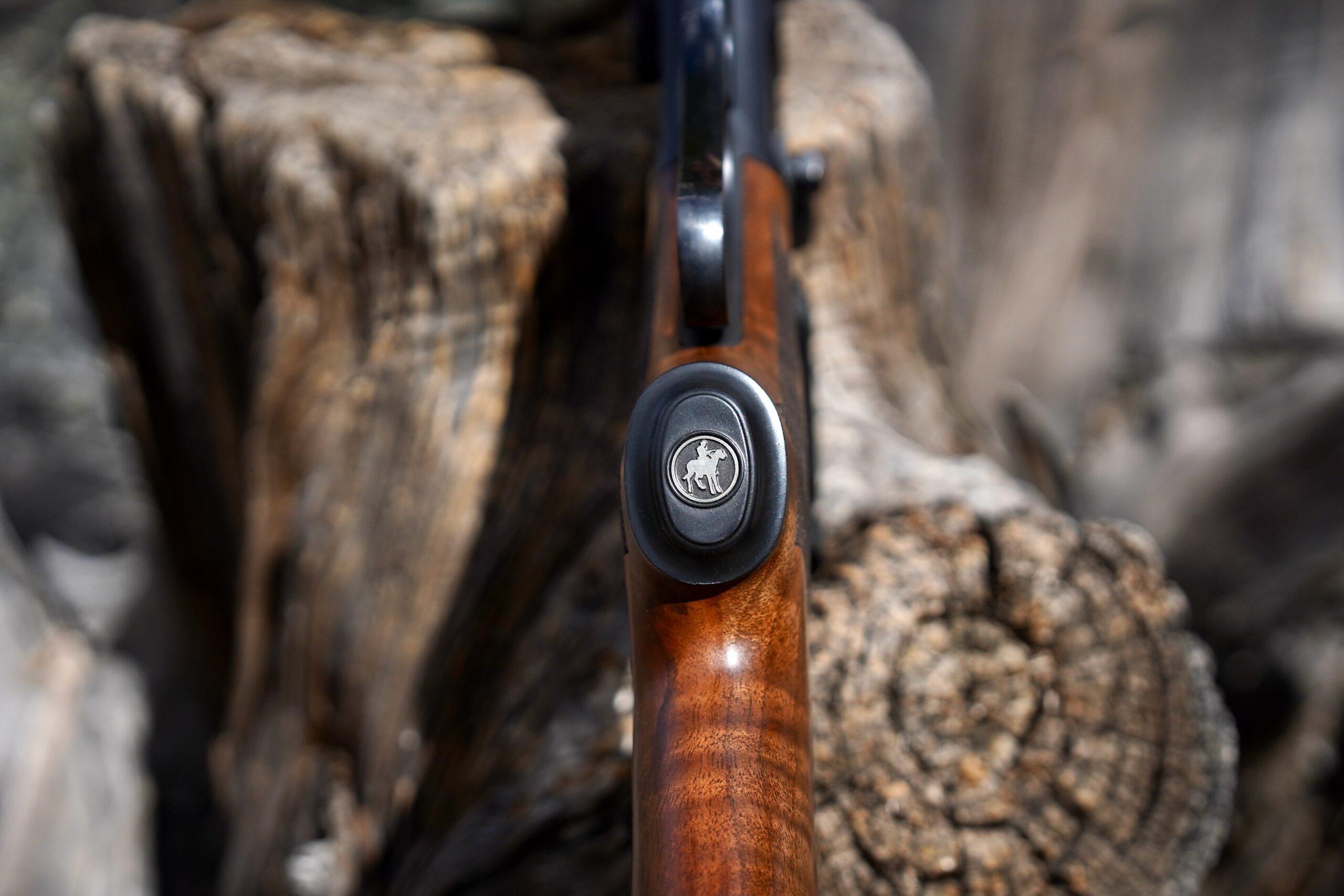
Other touches on the stock that we liked include the brown recoil pad that is effective and good looking, and the grip cap, which incorporates the Marlin horse and rider logo. Thoughtful elements like this elevate the rifle’s aesthetic impact giving it a classy air.
Metal
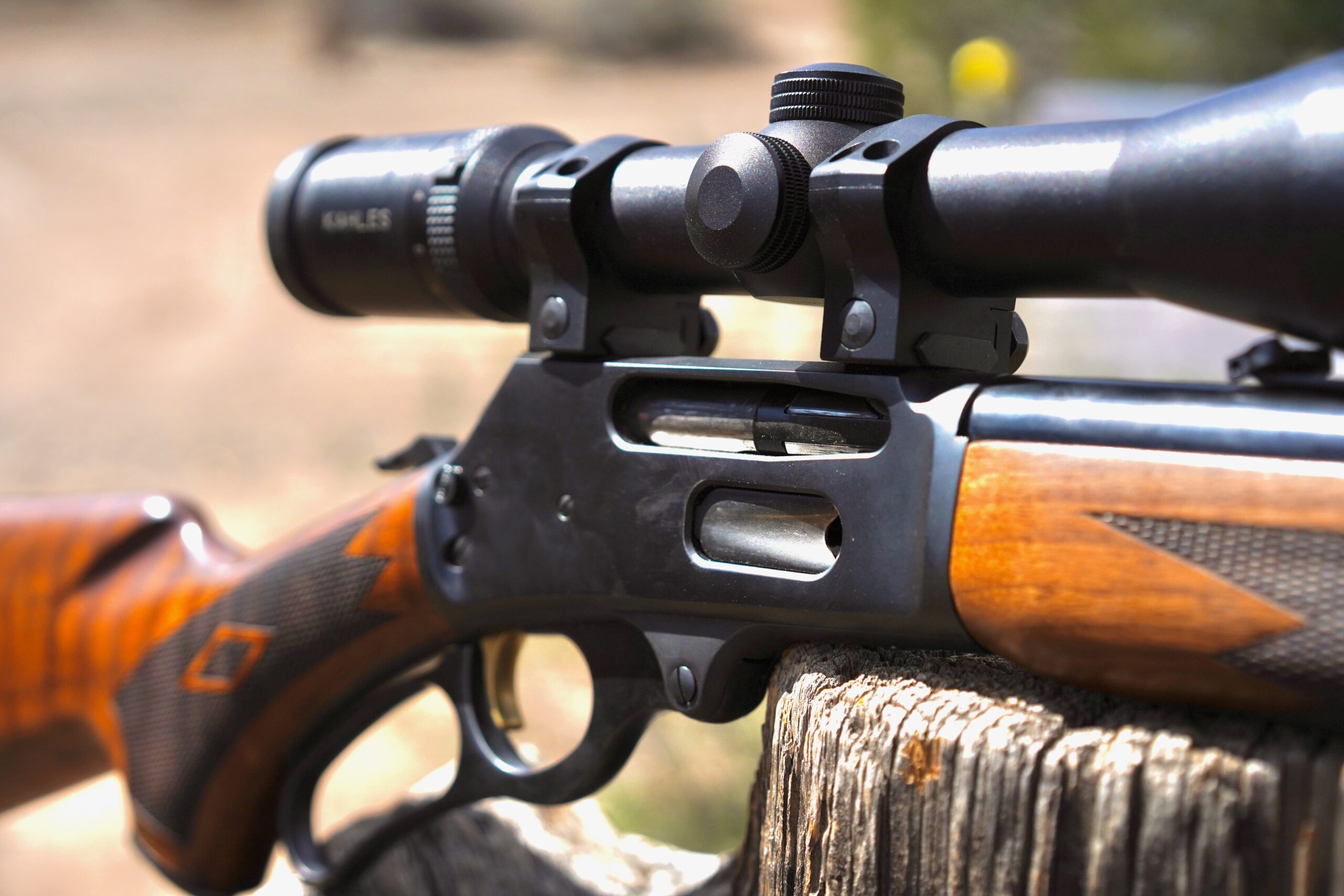
One area where a discerning eye can access the workmanship in a firearm is the metalwork. Take polishing, for instance. On a blued or stainless action with lots of flat surfaces a lot of skill is required to correctly polish the metal, which needs to be done by hand if it is going to be done right.
There’s a fine line between excessive polishing, which will round off the edges on the border of the flats and diminish the rifle’s visual impact, and polishing that is insufficient to bring the metal to a lustrous sheen. Our Marlin 336 Classic was polished correctly and looked as proud as a boss rooster greeting the sun.
Another indication of the craftsmanship that goes into these Marlins is the fit between the metal parts and the fit between the wood and metal. Credit has to go to the product engineers who took the time to make sure the CNC machinery in Mayodan, North Carolina, was churning out parts that fit snugly yet didn’t compromise the lever-action’s reliability. Lever guns, being inherently complex, are much more finicky with their functioning than bolt actions.
If you have any doubt about this, take any Marlin made in North Haven, Connecticut, and compare the two. It pains my Yankee heart to admit this (I spent most of my childhood just outside of North Haven), but if you flip the guns over you’ll see a much larger gap between the trigger plate guard and receiver on the Connecticut rifle versus the North Carolina Marlin.
Marlin 336 Classic Handling
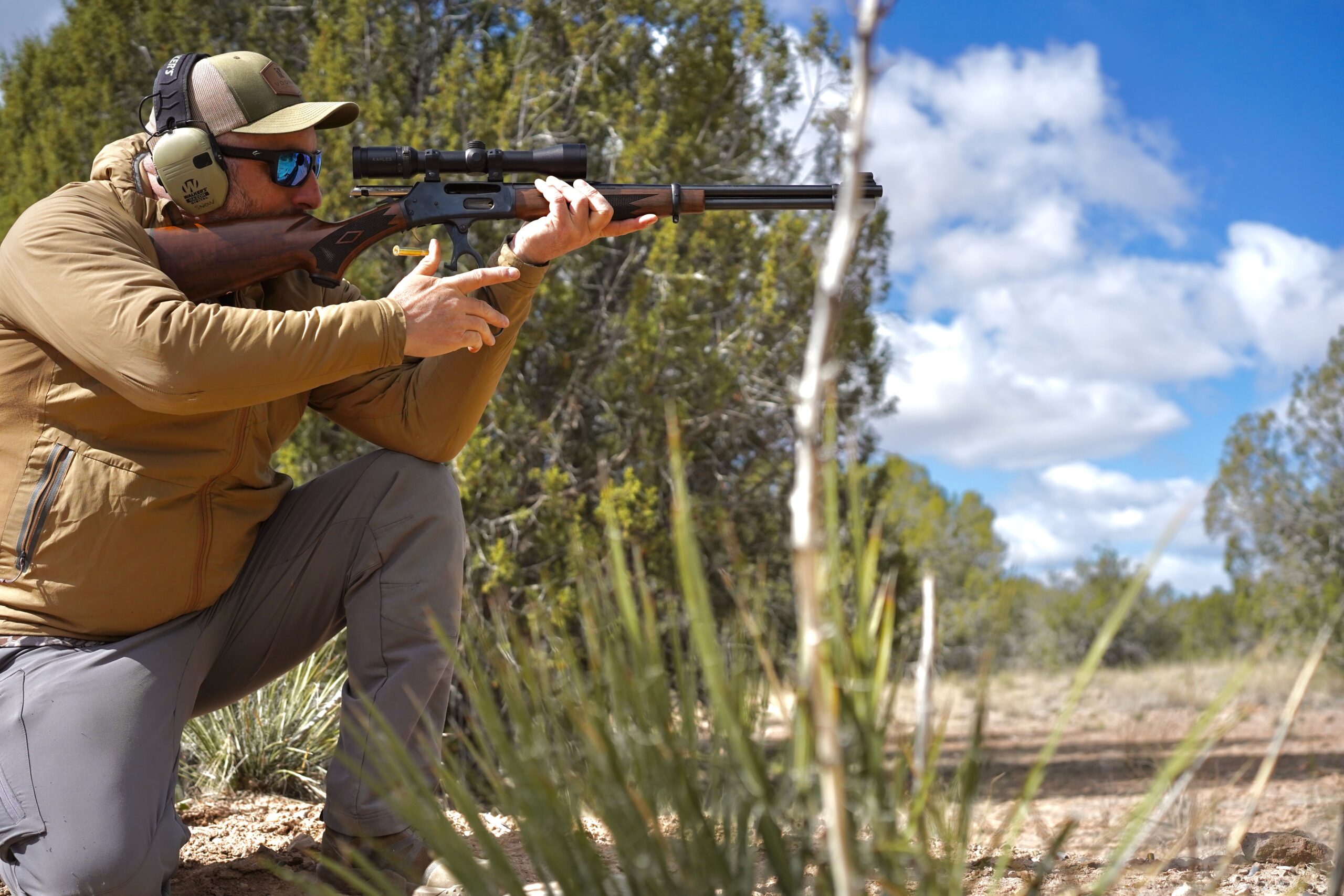
The hallmark of the lever action—and one reason the platform endures—is its reputation for nimble, fast handling, especially when wielded by a shooter with a modicum of skill.
The Marlin 336 Classic delivers on that promise in a seemingly effortless manner. The rifle is just a touch over 38 inches with its 20-inch barrel and, without a scope, weighs 7 pounds 1 ounce.
That puts it smack dab in the sweet spot upon which lever actions earned their fame. Paired with the mild-mannered .30/30 you end up with a rifle that drops game, doesn’t beat up the shooter with recoil, is a pleasure to carry and maneuver in brush, and is a natural pointer.
Even when scoped, which slightly diminishes its balance and feel, this rifle stands head and shoulders above most new bolt-actions in this category. During our gun test we found ourselves running the Marlin 336 Classic hard and fast for the sheer pleasure of experiencing its handling.
Marlin 336 Classic Accuracy
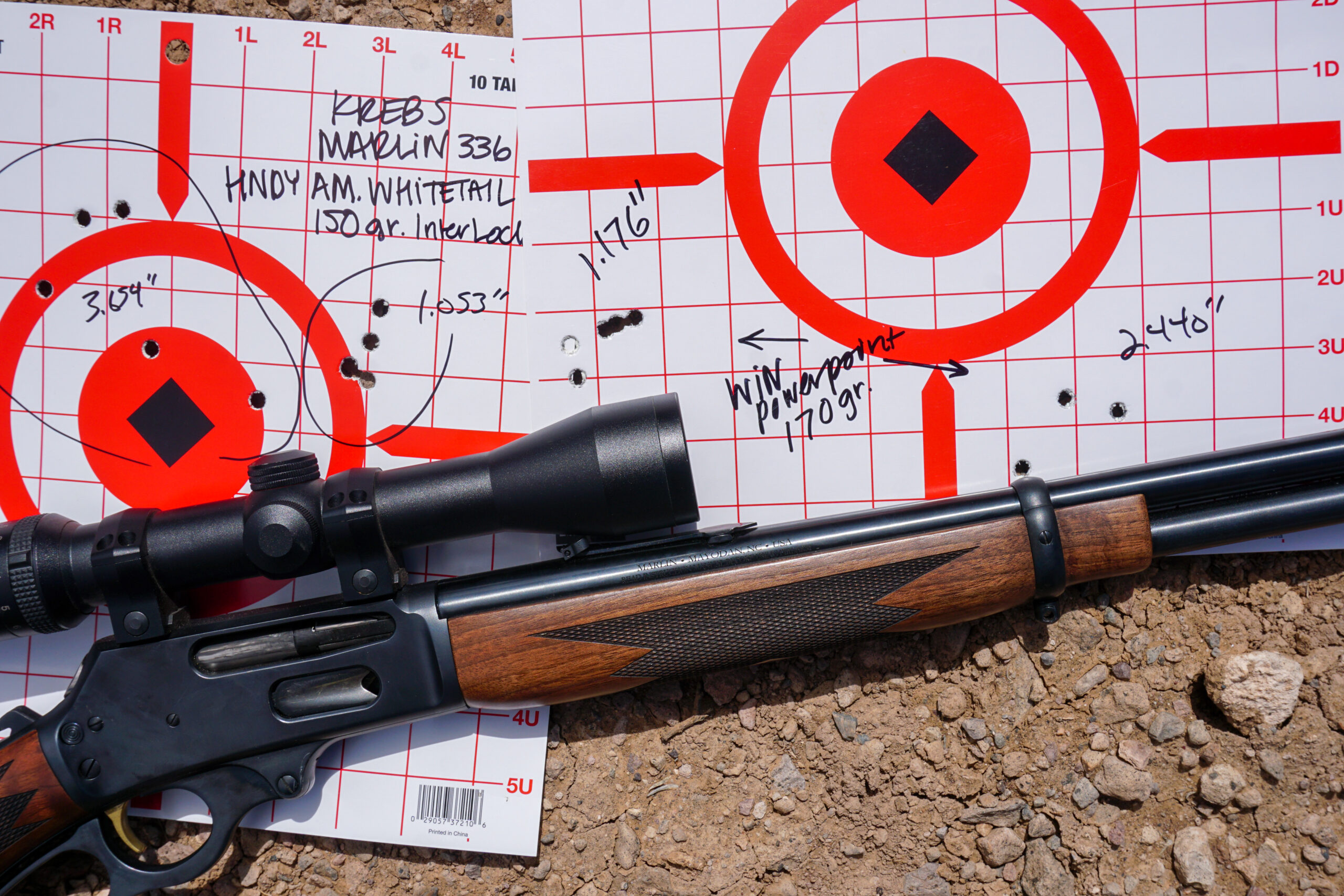
Coupled with its superlative handling was reasonably good accuracy, certainly up to snuff for the shot distances one would expect while hunting with a .30/30.
The overall accuracy of the 10 best five-shot groups was 1.627 inches at 100 yards. We shot four different loads through the rifle, and the Marlin seemed to like three of them in particular.
The top two loads in terms of accuracy were Winchester’s Super-X 170-grain Power-Point (1.631 inch average), and Hornady’s 150-grain Round Nose Interlock (1.506 inch average) in their American Whitetail line, though Winchester’s 150-grain Deer Season XP performed well too (1.909 inch average). All three of these loads are affordable. With a little digging, you can find them for $26 to $30 for a box of 20.
From the perspective of terminal performance, all these loads will tackle any whitetail within 150 yards, and will handle bear and even elk under most circumstances.
Other Chamberings—Not So Fast
While it made perfect sense to reintroduce the 336 Classic in .30/30 there are any number of shooters—including me—who are eagerly anticipating the arrival of other cartridge options. In particular, I’m looking forward to the .35 Remington being reintroduced, as that was my go-to Northwoods round in my old Marlin 336.
I wouldn’t say it is a given, but I’d be shocked if we don’t see the 336 Classic chambered in Remington’s 360 Buckhammer, given the number of deer hunters in the straight-wall states who are pining for a nice lever action to take afield.
Marlin has indicated that, at the very least, the .35 Remington is in the pipeline. But because demand for the .30/30 is beyond what they can deliver, they are holding off on new chamberings.
“Every .35 Remington we’d make is one less .30/30 we’d deliver,” a Marlin executive told me. “It’s a matter of which group do we piss off the least.”
Marlin 336 Classic Ergonomics
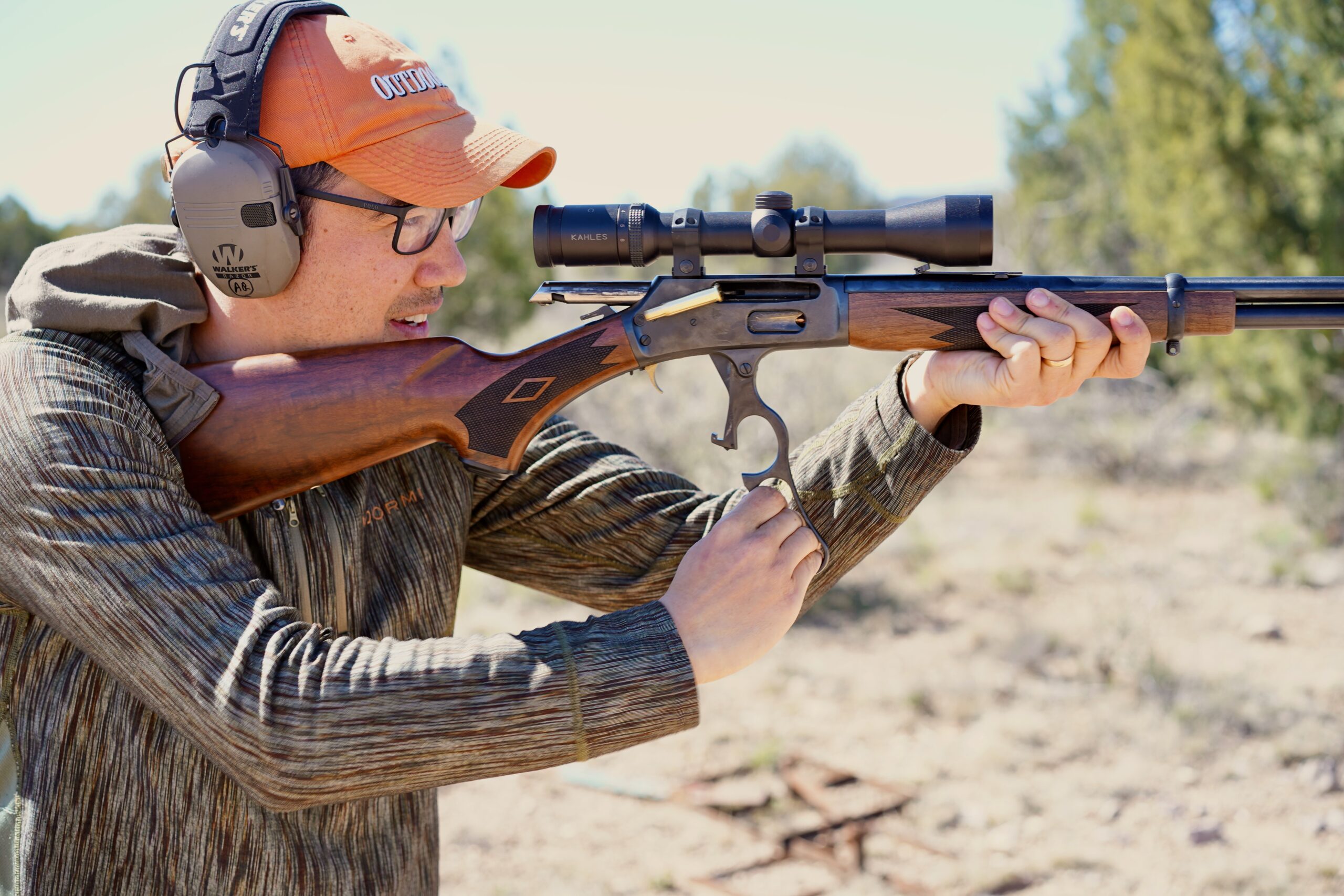
The handling we’ve praised so much is integrally linked with the Marlin’s excellent ergonomics. The geometry of the stock, the smooth operating action, the ease with which we could load the rifle—all contributed to our positive impression.
If you’ve run many lever guns with a side-gate loading port you’ve no doubt encountered the tendency of some rifles to pinch your finger as you slide rounds into the magazine. Another issue that crops up is when a round slips free from the lifter and wants to slide back into the receiver, which can cause headaches.
The Marlin 336 Classic avoided both these snafus and gave us no trouble at all. By the way, a good tip to avoid pinched fingers while loading a lever action is to shove the cartridge about two-thirds into the loading port and then drive it home with the next cartridge. This keeps your fingers out of harm’s way.
Downsides
While we were smitten by the 336 Classic, the rifle isn’t perfect. Though crisp, the 8-pound trigger pull is excessive. While the trigger on a 336 will never be as light as that on a target rifle, it can be better. I’d love to see Marlin get this down to 4.5 pounds or so, as a reasonable compromise.
The crossbolt safety, which Marlin introduced on the 336 in the early 1980s, is a solution to a non-existent problem and an irritant those who prefer a lever-action with smooth clean lines—but it is a feature we’re stuck with. I wouldn’t categorize it as a real drawback, but a guy can dream and imagine a Marlin 336 Classic without this mole on its face.
Marlin 336 Classic Price and Value
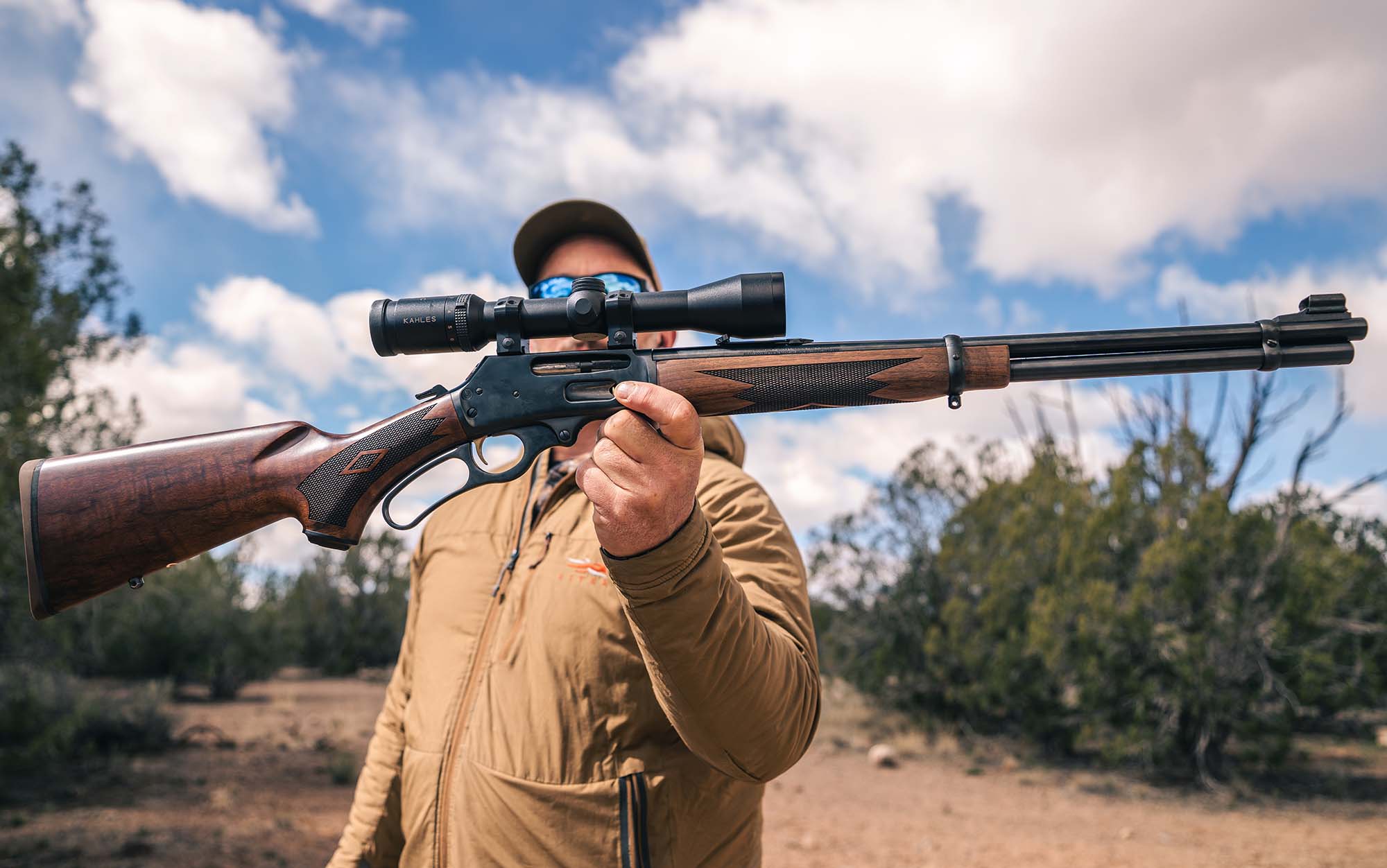
It is interesting to me to see comments online about the $1,239 price tag on the Marlin. I don’t know what these people are smoking, but they seem mortally offended that lever actions don’t cost $350 anymore.
A little perspective on this. First, 1983 was 40 years ago. Second, the Marlins and Winchester 94s being made at that time were rattling pieces of junk. All you have to do is compare the engraving on the barrel of a Mayodan Marlin to a North Haven sample. The execution of the lettering is night and day.
The fact is that the Marlin 336 Classic is worth every bit of the money they are asking for it—and if the resale value of the rifles online is any indication, plenty of folks are happy to shell out quite a bit more for the chance to get one.
Whether $1,239 is in your budget is its own matter. But at this price the Marlin is a heck of a good value. The craftsmanship, quality of the materials, and performance completely justify the price.
Marlin 336 Classic Pros and Cons
Pros
- Excellent workmanship
- Beautiful handling
- Good value
- Return of an icon
Cons
- Trigger is excessively heavy
- In short supply
Final Thoughts on the Marlin 336 Classic
There’s no reason to belabor the point, other than to say that under Ruger’s ownership the Marlin brand has taken wing and its future prospects are bright.
The Marlin 336 Classic is not only a worthy iteration of this long standing fixture in the American deer hunting scene but is a notably improved version of what came before. In this case the phrase “they don’t make them like they used to” couldn’t be more apt. These are the finest factory Marlins ever.

